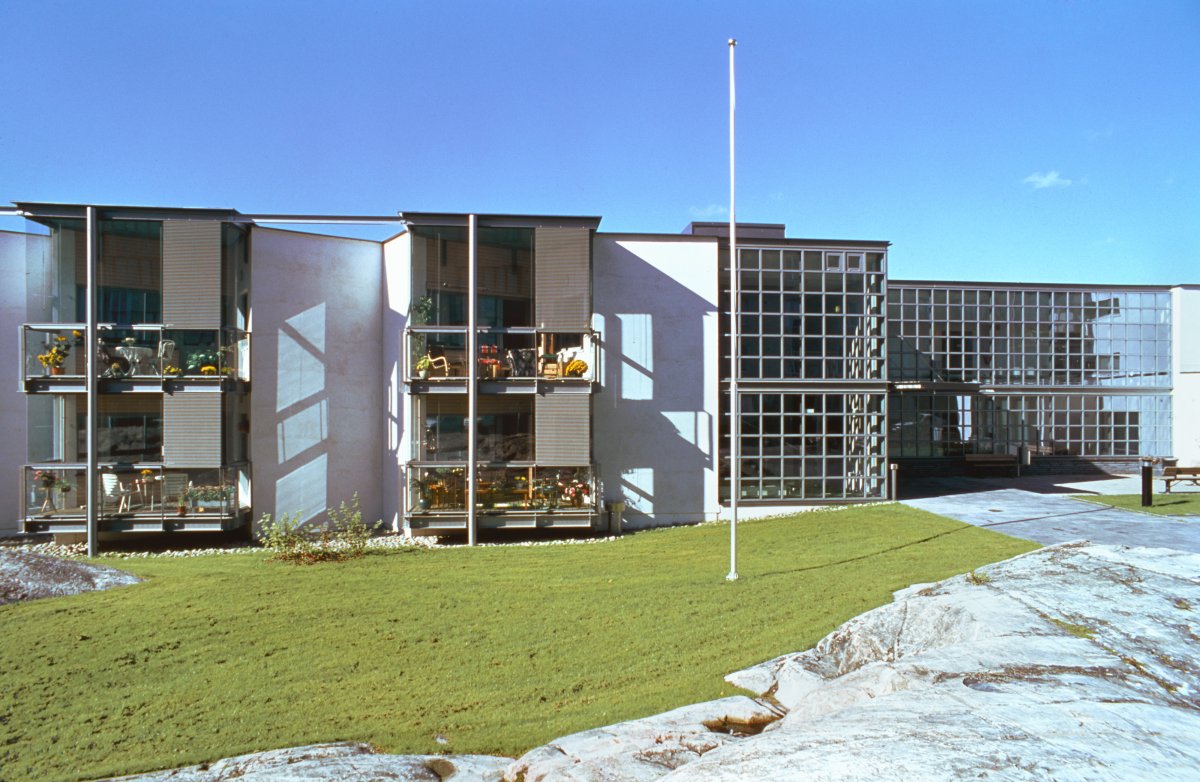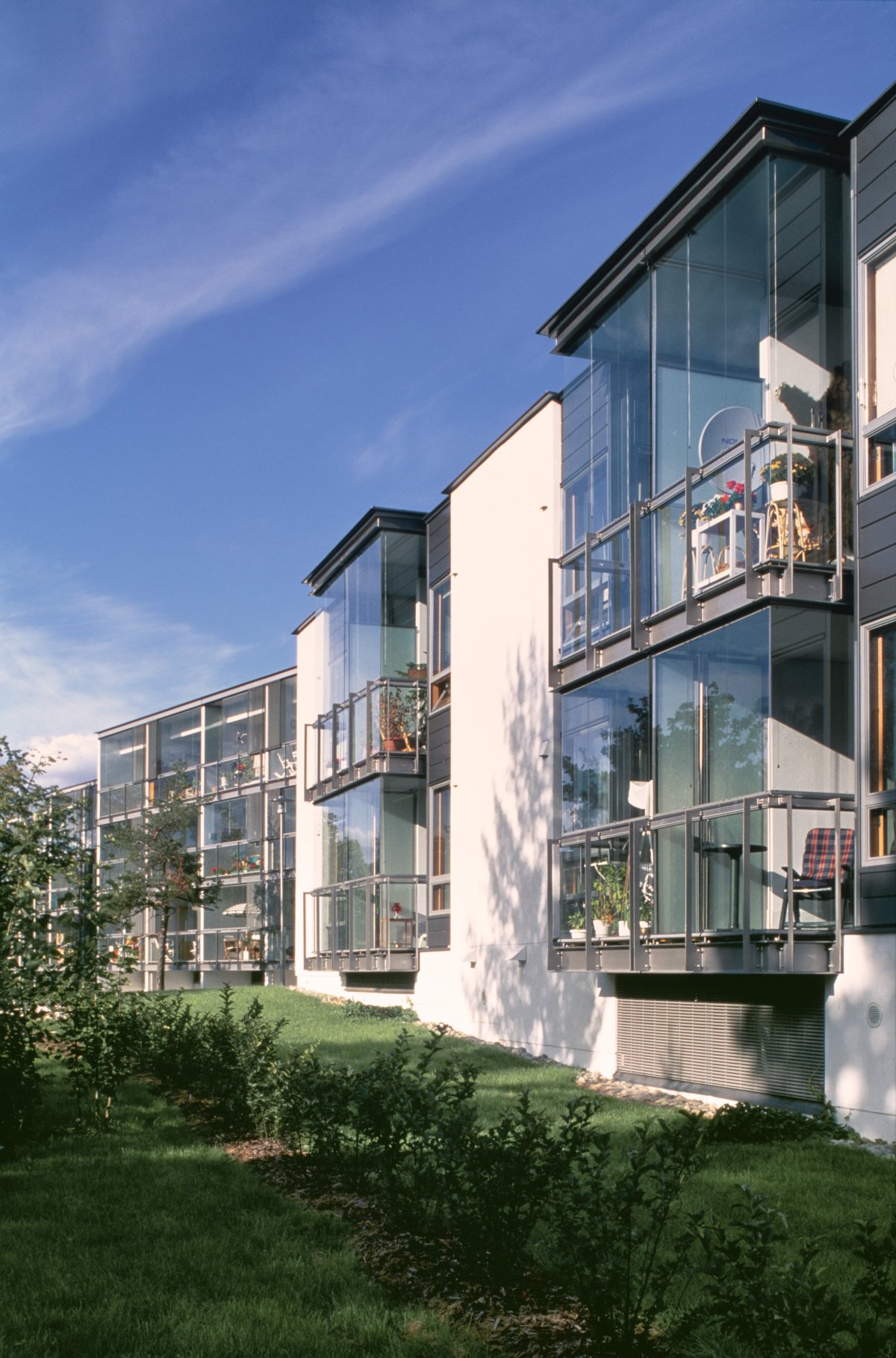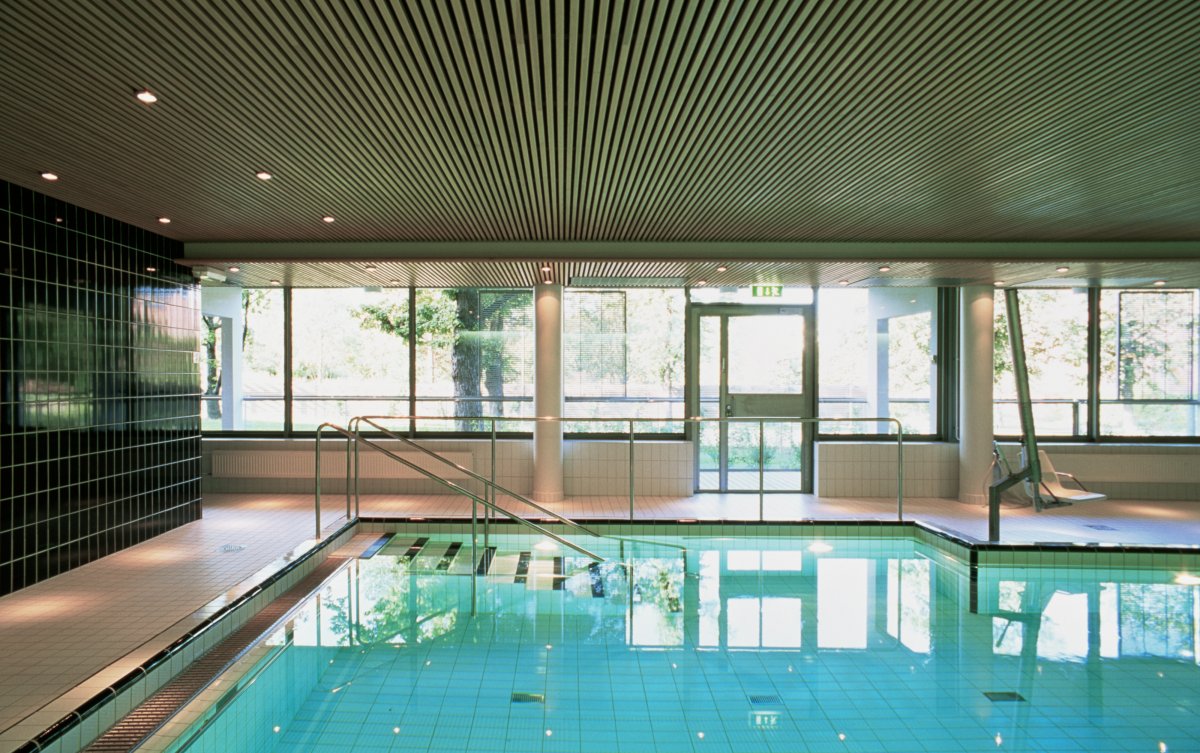Population aging challenges architects to develop new models for improving the quality of life of seniors, from details of dwelling to solutions concerning urban fabric. In a well-functioning, accessible environment architecture can also evoke memories and provide stimulus.
In the detailed plan for the area of the Hesperia Hospital, a site had been reserved for a block of flats for nurses on the edge of a park south of the hospital, which turned out to be excellent for senior citizens’ housing. Diverse services are available nearby, and the site is situated on a peaceful street. Added value is gained from the distinctive, coherent architecture of the buildings across the street, which combine Classicist motifs with the Functionalism of the early 1930s.
The new building is in dialogue with its environment: the architecture represents our day but takes account of the dignified neighbourhood. It is lower than the opposite blocks of flats. The stepped volume stands back from the street line, creating a multiform front yard with plants and exposed rock. As for the opposite buildings, their staircases are accessed through rectangular entrance yards that are bordered by hedges of uniform height. The vertical balcony zones that articulate the clear-cut blank surfaces of the facades of the senior home correspond to the bay window verticals across the street; simple steel details converse with horizontal mouldings and motifs typical of the stylistic breach between Classicism and Functionalism. The exterior walls of the new building are made of thermal blocks, rendered and painted. The building has large windows and some walls are glazed to bring in enough daylight.
The senior home has 88 flats, most consisting of one or two rooms. There are service and club facilities as well as a gym, sauna and swimming pool available for residents and partly also for outsiders. The building is accessible throughout, and the flats can be gradually provided with special equipment according to the individual needs of each resident.




